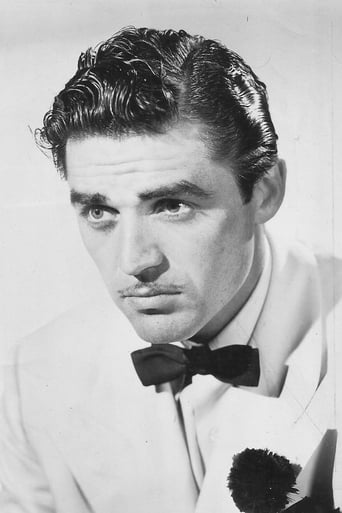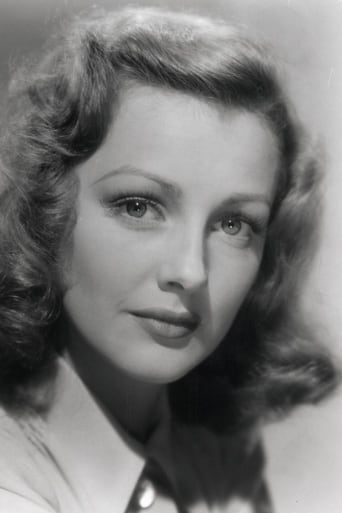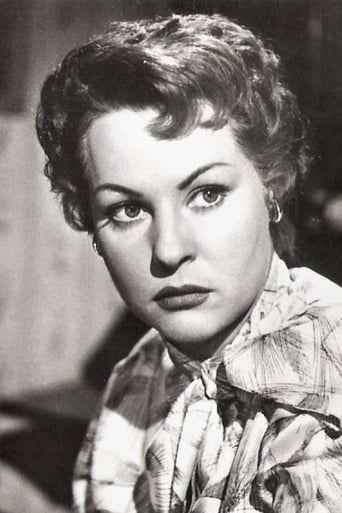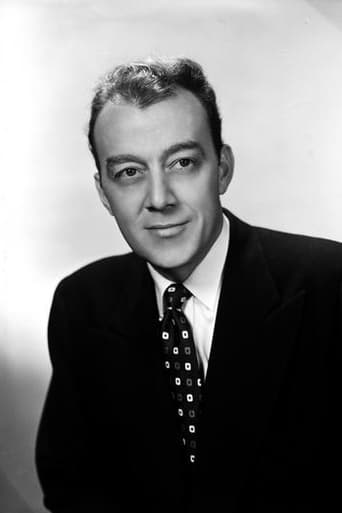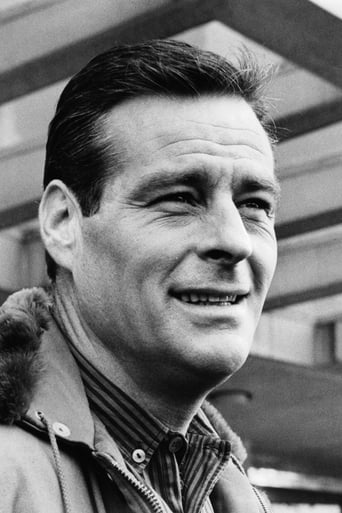Raetsonwe
Redundant and unnecessary.
Listonixio
Fresh and Exciting
Suman Roberson
It's a movie as timely as it is provocative and amazingly, for much of its running time, it is weirdly funny.
Nayan Gough
A great movie, one of the best of this year. There was a bit of confusion at one point in the plot, but nothing serious.
lchadbou-326-26592
The HD copy of Highway 301 currently available through Warner Archive is a special treat for those who appreciate noir cinematography. The picture starts off with location footage of Winston Salem, North Carolina, one of the three states in which our gang of robbers moves back and forth. (In the intro which precedes the opening bank heist, the real governors at the time of North Carolina, Maryland, and Virginia attest to the ominousness of these fact-based exploits, one of them even describing them as "criminal terrorism.") But after another heist, this one of a railway express truck where the stolen money turns out to be cut - gang leader Steve Cochran later describes it as "shredded wheat"- the last part of the film turns into more of a studio bound, moodily photographed exercise in noir style. The first such scene shows Cochran trying to escape from cops, after his partner has been shot, through the dark, wet streets. The second, especially exciting scene shows the French-Canadian wife (Gaby Andre) of one of the other crooks (Robert Webber) fleeing through a park at night,to escape Cochran who she suspects will kill her because she knows too much- she lands up getting into a cab which turns out to be driven by Cochran! The film climaxes in a tense hospital episode where another of the gang women (especially well played by the underrated Virginia Grey) pretends to be a reporter, so she can scope out the setup where Andre, shot earlier by Cochran, is hidden and the gang can finish the victim off, she almost fools the police sergeant. Carl Guthrie's lensing of these three sequences along with Andrew Stone's writing and direction make of this seemingly ordinary crime picture something memorable.
LeonLouisRicci
Here Come the 1950's and There Goes Film-Noir or at Least there is an "Evolution" of the Noir Sensibilities. Hollywood Now Seems to have been Pressured into Cleaning Up Their Act, or Pretending to be On Board with Pro-Post-War Conservatism.The Government, Law Enforcement and J. Edgar Hoover were Infiltrating Every Aspect of American Life (sound familiar Today), Dictating Mores and Clean Living (for the Proletariat that is but not for that Hypocrite Hoover). The HUAC Hubris is On the Horizon.So the Film Opens with Big Brother State Governors Reading Cue Cards about the Folly of Crime and it Doesn't Pay and All of That. Then Director Andrew Stone Seems to be Saying OK now that's Out of the Way, and Let's Loose with Some Gritty Up Close and Personal Violence. In Fact One Such Shooting of a Female Gang Moll is Point Blank and that is Dialoged About Afterwards and No One can Figure Out How She Survived.The Movie Clips Along at a Rapid Pace and there is Much Suspense and Action with a Finale that has a Guns Blazing Car Chase that Ends with a Speeding Train that is Quite Startling. Steve Cochran Steals the Show as the Gang Leader and gets Good Support from Everyone Else. Overall, an Above Average and Forgotten Crime Noir that is Stylish, Brutal, and Nasty. It is a LIttle Known Movie that is Highly Recommended.
Martin Teller
The criminal exploits of a small group of gangsters working in the Maryland/Virginia/North Carolina area. The docudrama subgenre of noir tends to produce few masterpieces and a lot of mediocrities. This one is closer to mediocrity, but has a few worthwhile assets. The intro, with "crime does not pay" lectures by the governors of the three states, sets the self-righteous, judgemental tone for the film's narration and messages. The story follows a standard formula, with early successes by the gang followed by the net of the law gradually closing around them and forcing their hand. The characterizations are fun but one-note. Steve Cochran in the lead has an edgy brutality but not much else. However, the action sequences are well done, and there is one nail-biting, suspenseful scene as one of the gangster's gals tries to escape. The photography is quite nice as well, at least during the gloomy night scenes.
Brian Camp
I had high hopes for HIGHWAY 301 (1950). It's a Warner Bros. crime picture produced a year after WB's classic, WHITE HEAT, with two of the same cast (Steve Cochran and Wally Cassell), and it's based on the true story of the Tri-State Gang. It starts out well with semi-documentary sequences, including speeches by three Southern governors (from Maryland, Virginia, and North Carolina) warning us that crime doesn't pay and hoping this film will reinforce that message. There are establishing shots of Winston-Salem, NC, before the film reverts to Southern California locations for the first caper in the film, a well-planned bank robbery by the five members of the gang. The next caper, still within the film's first half-hour, is the disastrous robbery of an armored truck, filmed on location in L.A. (but taking place in Virginia). Eventually the cops close in and the gang goes on the run, taking with them Lee Fontaine (Gaby Andre), the French-Canadian girlfriend of a now-dead gang member, and holding her captive after she's finally figured out that these guys aren't women's apparel salesmen after all. She comes off as astoundingly naive, so it's hard to feel sympathy for her.After all the location footage in the first half-hour, the rest of the film is shot entirely on Warner Bros. soundstages and the studio's generic urban backlot. This part is supposed to take place in Richmond, Virginia, but there isn't a single element of southern flavor nor a southern accent to be heard anywhere. (Nor do we ever see Highway 301.) There are no more robberies as the film becomes a standard gangster picture as Fontaine tries to escape the gang at various points. In one scene she's stalked by Cochran at night through deserted streets, parks, and back alleys which create a nice noir-ish effect that would have meant something if the film had managed to generate any suspense. It all culminates in a hospital stand-off and a no-budget car chase staged entirely via rear screen projection. This was during a year when location-filmed car chases were attracting attention in films like Gordon Douglas's BETWEEN MIDNIGHT AND DAWN and Anthony Mann's SIDE STREET, so it's hard to excuse the shoddy work in this film.Two members of the gang, played by Richard Egan and Edward Norris, disappear for long stretches of the film even though they're all supposed to be on the run. Robert Webber, in his film debut, plays the boyfriend of Fontaine and the one who told her they were a team of salesmen. (The oldest film of Webber's I'd seen previously was TWELVE ANGRY MEN, 1957.) As many of these movies as I've seen, and as many books about real-life crime gangs as I've read, I don't recall coming across any major instance where the gang lets a woman into their inner circle who doesn't already know—and accept—what they do. Fontaine's presence, as well as that of Cochran's ill-fated girlfriend seen earlier in the film (played by the pretty Aline Towne), violate a key precept of the genre and the tacit allowance of it by Cochran's hardened gang leader made it difficult for me to suspend my disbelief. Virginia Grey plays Cassell's girl, the only remotely believable female character in the film, although her addiction to soap operas heard on the portable radio she carries around seems like a screenwriter's construction designed to give her a "quirk." Her attempt to impersonate a reporter at the hospital is pretty funny, though.Cochran (Big Ed in WHITE HEAT) snarled with the best of them and does it throughout this film in a portrayal he could have pulled off in his sleep. He's quite menacing to the women in the film, who spend a lot of time sneaking down stairways to avoid and escape him. (In real life it was quite the reverse, or so I've heard.) Cochran was an excellent actor, but he suffered from typecasting, especially in a film like this, where he's given no characterization at all. Wally Cassell (Cotton Valetti in WHITE HEAT and also seen in THE SANDS OF IWO JIMA) plays Cochran's closest sidekick and it's the biggest part I've seen him in. He's very good, but it's strictly a standard-issue role.Edmon Ryan co-stars as Sergeant Truscott, a mild-mannered Washington DC police officer who leads the investigation and also narrates the film. One of his final lines to the audience is quite memorable: "You can't be kind to congenital criminals like these."

